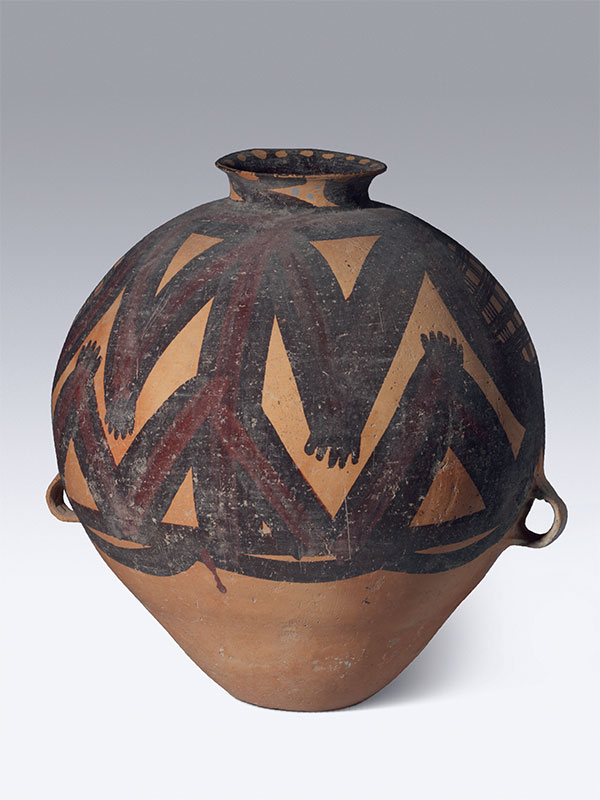Large painted pottery jar
China, Neolithic to Shang culture, c. 1500 BC
A jade ceremonial blade of roughly rectangular format, widening at the sharpened base. The blade is pierced twice with circular holes at the top, for attachment. The sides are decorated with two distinct rows of notches. The semi-translucent stone is predominantly dark green in colour with some areas of dark and light staining.
Jade blades of this form, carved with teeth- like notches to the sides, are generally referred to as yazhang. They were first produced during the Neolithic period and continued to be popular during the Xia and Shang dynasties. The geographic distribution of this blade type is surprisingly wide, including Shandong, Shaanxi, Henan, and Sichuan provinces. The function of yazhang has been an area of discussion, and interpretations of it as a military implement have been suggested, but general consensus has it that such blades served a largely ceremonial function, which is consistent with the archaeological excavation findings of yazhang from sacrificial pits. A comparable blade, referred to as an axe and dated to the Shang dynasty, is in the Joseph Hotung collection.[1]
- Rawson, J. Chinese Jade from the Neolithic to the Qing, British Museum Press, London 1995, 10:1, p. 176-7

